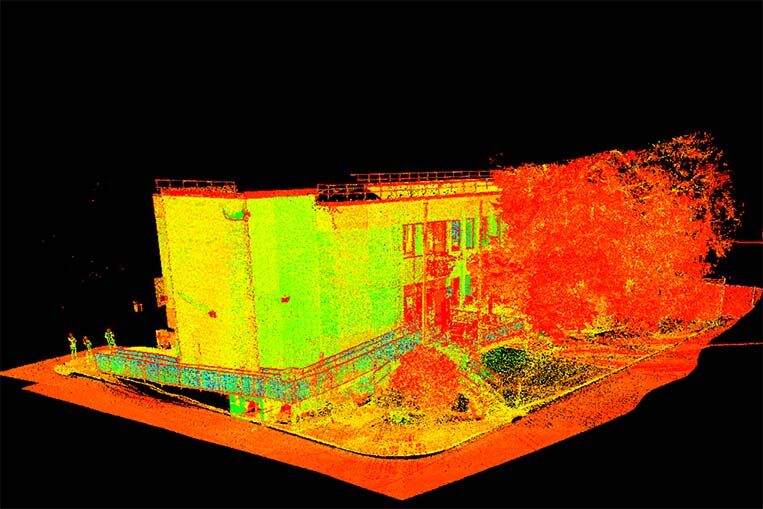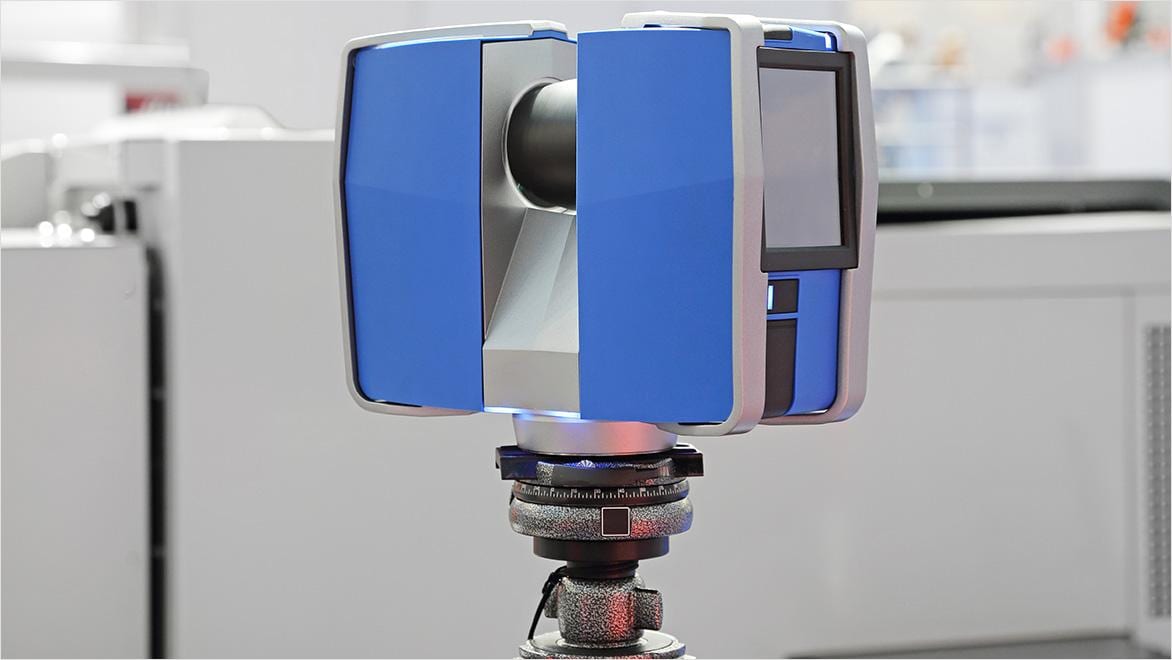A Practical Introduction to Using 3D Scanning in Design Development
Wiki Article
The Future of Precision Measurement: Understanding the Role of 3D Laser Scanning Technology
The landscape of precision measurement is developing with the advent of 3D laser scanning technology. This advancement guarantees boosted precision and effectiveness across various fields. As industries start to welcome these advancements, the implications for project administration and execution become significantly considerable. The transformative effects of this technology prolong past simple numbers and dimensions, hinting at a wider change in exactly how professionals approach their work. What might this imply for the future?What Is 3D Laser Scanning Technology?
3D laser scanning modern technology is a sophisticated method used to catch accurate three-dimensional measurements of physical things and settings. This innovation uses laser beams to gather information factors, which are after that refined to create thorough electronic depictions of the scanned subjects. By giving off hundreds of laser pulses per secondly, 3D laser scanners can precisely record the form, size, and spatial relationships of different surface areas.The process usually includes placing the scanner at various perspective to catch substantial information. The resulting point cloud, a collection of millions of information factors, can be analyzed and exchanged 3D models. Applications of this innovation span numerous fields, including style, heritage, and design conservation, where it assists in documents and evaluation. As a non-intrusive method, 3D laser scanning minimizes disruption to the atmosphere, enabling thorough analyses of both existing frameworks and natural landscapes, therefore boosting understanding and promoting educated decision-making.
Trick Advantages of 3D Laser Scanning in Various Industries
3D laser scanning innovation offers substantial benefits across numerous markets by providing improved accuracy and precision in measurements. This technology not just improves workflows however likewise causes substantial time and cost savings. As companies progressively embrace this cutting-edge approach, the benefits become evident in enhanced project end results and effectiveness.Boosted Accuracy and Precision
The integration of laser scanning technology has actually reinvented the way sectors approach measurement and information collection. This innovation offers an unprecedented level of accuracy, catching millions of information factors in a single scan. Because of this, specialists throughout various fields, such as style, manufacturing, and engineering, can develop extremely outlined 3D designs that mirror real-world conditions. Enhanced precision minimizes errors connected with typical dimension methods, making certain that styles and buildings are based upon precise information. In addition, the ability to catch complex details permits much better analysis and decision-making, eventually leading to improved outcomes. By leveraging 3D laser scanning, markets can attain higher criteria of quality, making it an important device for specific measurements.Time and Cost Performance
Effectiveness in time and expense is a significant benefit provided by laser scanning innovation, changing project execution across numerous sectors. By swiftly catching comprehensive 3D information, laser scanning minimizes the moment invested in hands-on dimensions and decreases the threat of errors. This swift information acquisition assists in quicker decision-making and task timelines, allowing groups to allot sources extra properly. In addition, the modern technology lowers the need for rework, as exact models lead to better preparation and implementation. Industries such as construction, architecture, and making benefit substantially, seeing reduced prices associated with labor and products. Overall, 3D laser scanning not just enhances operational performance but likewise contributes to significant cost savings, making it a very useful tool in today's competitive landscape.Applications of 3D Laser Scanning in Style and Building
As architectural and construction jobs expand progressively complex, the adoption of laser scanning technology has actually become a transformative solution. This modern technology supplies exact dimensions and detailed 3D depictions of existing frameworks, promoting even more accurate preparation and style procedures. Designers use 3D laser scanning to create electronic models that catch detailed details, making certain that remodellings and new buildings straighten flawlessly with existing problems.

The Duty of 3D Laser Scanning in Manufacturing Processes
3D laser scanning plays a necessary duty in making procedures by improving top quality control with exact dimensions and information collection. This modern technology enables suppliers to identify disparities early, reducing errors and waste. Furthermore, it enhances production process by facilitating far better interaction and sychronisation amongst groups.Boosted High Quality Control
Quality control in making processes has been changed by the assimilation of laser scanning modern technology. This ingenious approach enables for specific dimensions and thorough inspections of components, guaranteeing that they meet stringent high quality requirements. 3D laser scanning catches detailed geometries and tolerances, allowing makers to discover variances from design requirements swiftly. This technology substantially decreases human error linked with traditional dimension techniques, supplying regular and dependable information. By facilitating real-time quality control, it allows positive adjustments in the production procedure, ultimately bring about enhanced product integrity and customer contentment. As markets significantly adopt 3D laser scanning, the possibility for improved top quality control ends up being apparent, noting a transformative shift in producing methods.Streamlined Production Operations
Effective production process are significantly gaining from the assimilation of laser scanning technology in making procedures. This modern technology allows for rapid, exact measurements of settings up and elements, significantly decreasing the moment needed for arrangement and changes. By catching specific geometry, manufacturers can rapidly recognize disparities between layout requirements and real products, enabling immediate rehabilitative actions. Furthermore, 3D laser scanning assists in click site the smooth transfer of data in between layout and manufacturing teams, improving cooperation and decreasing errors. The modern technology also supports index digital twin production, permitting real-time monitoring and optimization of making procedures. Consequently, organizations can attain higher effectiveness, lowered waste, and boosted general efficiency, eventually driving affordable benefit in the marketplace.Preserving Heritage: How 3D Laser Scanning Aids Cultural Conservation
As cultural heritage sites encounter the threat of damage and devastation, ingenious technologies such as laser scanning arise as crucial tools for preservation efforts. 3D laser scanning captures detailed information of historic frameworks and artefacts with impressive precision, developing electronic models that serve multiple purposes in preservation. These designs enable exact documents of current problems, allowing specialists to keep track of adjustments gradually and examine deterioration threats.Furthermore, laser scanning assists in online repair, assisting conservators establish prepare for repair services or recreating lost aspects without invasive techniques. The innovation additionally aids in enlightening the general public, supplying immersive experiences via online trips that highlight the importance of these websites. By incorporating 3D laser scanning into social conservation techniques, stakeholders can guarantee that heritage is maintained for future generations while improving understanding and appreciation of historical contexts.
The Future Overview: Improvements and Trends in 3D Laser Scanning Modern Technology
Though 3D laser scanning innovation has actually already changed various industries, its future pledges even higher developments that will boost precision, speed, and access. Emerging trends show an increase in assimilation with artificial knowledge and machine knowing, causing smarter data processing and evaluation capabilities. This harmony will certainly enable quicker decision-making and more specific results in areas such as construction, heritage, and design preservation.Improvements in equipment are anticipated to yield lighter, a lot more portable scanning devices, democratizing accessibility for smaller firms and private professionals. As software remains to develop, straightforward applications will read this streamline complicated workflows, making 3D scanning much more easily accessible to non-experts
The surge of cloud-based solutions will certainly facilitate real-time partnership and information sharing amongst stakeholders, leading the means for structured job monitoring. Collectively, these fads signify a future where 3D laser scanning innovation ends up being an important device in an even more comprehensive spectrum of applications.
Often Asked Concerns
Just How Much Does 3D Laser Scanning Innovation Cost?

What Are the Abilities Needed to Operate 3D Laser Scanners?
Operating 3D laser scanners calls for technical effectiveness, attention to information, spatial understanding, understanding of software application for data handling, and an understanding of checking concepts. Additionally, strong analytical abilities and analytical abilities are necessary for reliable procedure.Can 3D Laser Scanning Incorporate With Other Technologies?
Yes, 3D laser scanning can incorporate seamlessly with various other technologies, such as Geographic Details Systems (GIS), Building Information Modeling (BIM), and increased fact, boosting information precision and promoting improved analysis throughout numerous industries and applications. - 3D ScanningWhat Is the Regular Scanning Range of These Tools?
The common scanning variety of 3D laser scanning tools differs extensively, typically in between 50 meters to over 1,000 meters, relying on the model and application, influencing their suitability for different precision measurement jobs and environments.The length of time Does a 3D Laser Scanning Job Take?
A 3D laser scanning task usually takes anywhere from a few hours to several days, depending upon aspects such as job dimension, complexity, and needed information. Each job's timeline can vary substantially based upon these aspects.The landscape of precision measurement is evolving with the introduction of 3D laser scanning technology. 3D laser scanning innovation is an advanced technique made use of to record exact three-dimensional dimensions of physical objects and environments. 3D laser scanning modern technology uses considerable benefits across various industries by giving enhanced precision and precision in dimensions. 3D laser scanning technology has already transformed various sectors, its future guarantees even greater innovations that will improve accuracy, speed, and availability. 3D laser scanning innovation generally costs in between $10,000 and $100,000, depending on the devices's capacities and features.
Report this wiki page